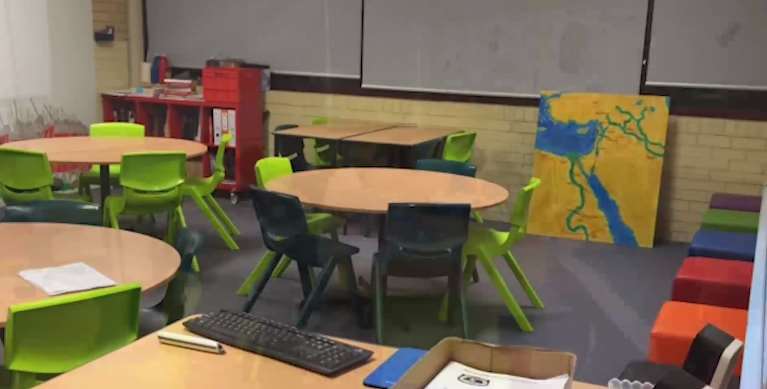Schools are taking design inspiration from collaborative and co-working spaces pioneered by technology companies and start-ups to remodel traditional classroom spaces.
The NSW Department of Education has recently published several videos from Macquarie Fields High School and Campbelltown Performing Arts High School that describe the process they are undertaking to transform learning environments.
Macquarie Fields history teacher Melissa Collins said her faculty had been involved in ongoing “conversations” on how to improve students’ learning experiences.
“The possibility of updating our learning spaces was something that came up,” she said.
“We realised that we can have as many innovative teaching strategies as we like within the classroom, but if we can improve the environment students are in, we can really improve their engagement – not just in the activities and content, but also their feelings of being in a safe and supportive learning environment.”
The school kicked off the process by asking students what they wanted from their learning spaces.
“The answer that came out of it was kids really wanted an environment that they could collaborate in, that was fun, made them feel energetic about their learning, was colourful and made them feel engaged”.
Students stayed involved in the process, meeting with a furniture supplier to workshop design and layout ideas for the classrooms.
The design goal was for a multi-purpose space, with areas for collaboration and individual work that also supported classroom technology use.
Students involved noted the design made it easier to source power for laptops they used in classroom work, while the addition of an interactive whiteboard also aided collaboration.
Campbelltown principal Stacey Quince noted that her school’s desire to pursue new pedagogies “has been impacted by traditional classroom settings”.
The school started by prototyping what Quince calls an “open, flexible learning space”, remodelling a former staff common room with new furniture, technology and whiteboard-style table surfaces.
Quince put the cost at “just a few hundred dollars” and said that surveys and focus groups pointed to its success, pushing the school to scale the remodelling project.
It has invited expressions of interest from its faculties to remodel spaces in their own areas.
The school said technology had enabled it to create “individual learning programs” for students and facilitated collaboration online, including with students in schools in other states.
“This work is not about new learning spaces per se,” Quince said.
“It is about new pedagogies that engage students deeply in their learning and allow them to maximise the achievement of learning outcomes.
“But it is around designing spaces that don’t hinder these pedagogies but rather support the implementation of them.”









